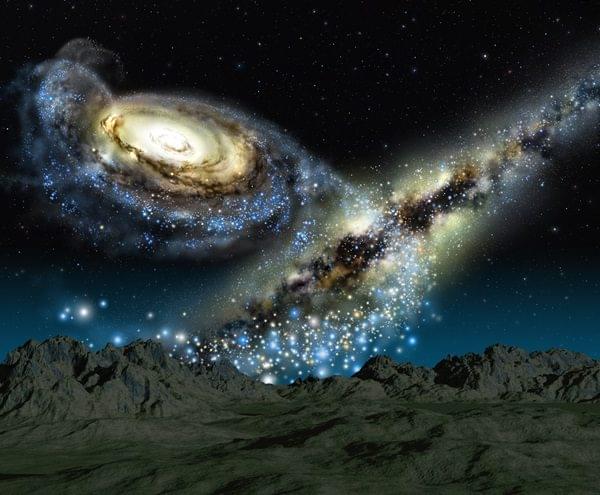BILLIONS OF YEARS FROM NOW, the night sky will glow with stars, dust, and gas from two galaxies: the Milky Way, in which we live, and the encroaching Andromeda Galaxy (M31). Astronomy by Lynette Cook
Our galaxy, the Milky Way, is colliding with its nearest large neighbor, the Andromeda Galaxy (M31). The merger will change the structure of both galaxies billions of years from now, resulting in a new arrangement of stars known as Milkomeda (“milk-AHM-mee-da”). The merging will significantly change the night sky. But into what?
The Milky Way’s thin disk of stars and gas is currently visible as a nebulous band arching over the summer sky. As Andromeda travels across the Milky Way, a second lane of stars will join the one that is currently visible in the night sky. The stars will no longer be limited to two narrow lanes after the final merger, but will instead scatter throughout the entire sky.
